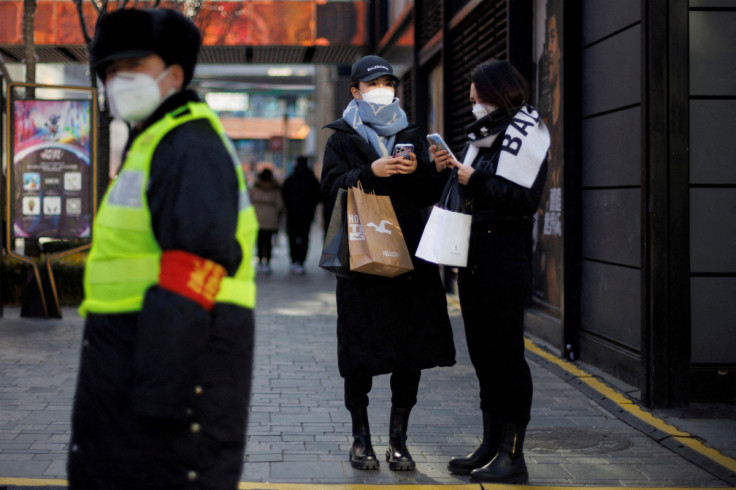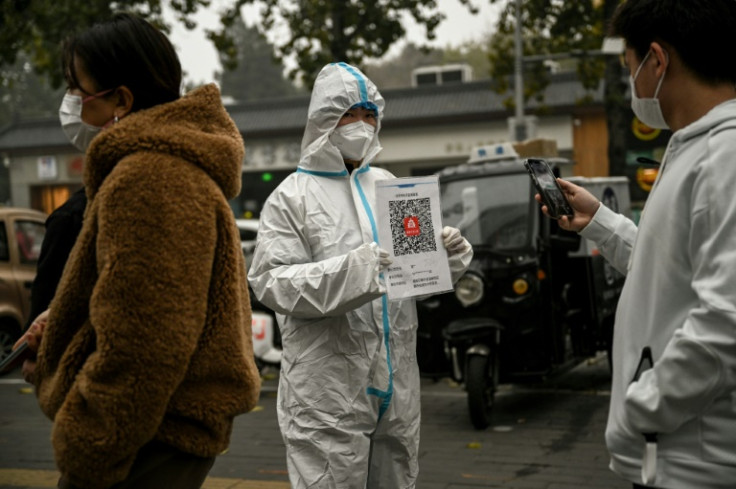China Braces For New COVID-19 Wave, May Peak At 65 Million Cases Per Week

KEY POINTS
- A new wave of COVID-19 infections started in China in April
- A Chinese expert warned the latest wave could peak at 65-M cases per week
- Chinese residents are reportedly not afraid of the new COVID-19 outbreak
China faces yet another wave of COVID-19 infections that could lead to millions of new cases nationwide.
The grim forecast was revealed by Zhong Nanshan, a respiratory disease specialist, at a medical conference this week in China's southern city of Guangzhou.
Zhong was reported by Chinese state media saying that China could be approaching 40 million infections per week. By the end of June, the weekly number of infections could surge to 65 million, NBC News reported.
Zhong noted that the current COVID-19 wave, which started in late April, was "anticipated."
To mitigate the new coronavirus outbreak, Zhong announced that the Chinese government had given preliminary approval to two vaccines aimed at the XBB subvariants, and other vaccines could be approved soon.
Despite the anticipated spike in new COVID-19 cases, the Chinese government and residents' response to it appeared to be muted.
Qi Zhang, a 30-year-old worker at a finance company in China's northern city of Tianjin, pointed out the difference in people's perception between the latest coronavirus surge and the previous one.
"The last time, everyone was terrified, but now they don't think it's a big deal," Zhang said.
Joey Wang, a 24-year-old student in Hebei province, said the public fears regarding the new COVID-19 surge seem to have been eased by the Chinese government.
"No more media coming out trying to terrify the public, no more 'fight the pandemic' type of short videos to alert people, and no more hardcore measures like the lockdown," Wang said.
The Chinese government's subdued coronavirus response could be aimed at reassuring the U.S. and other foreign businesses after its controversial zero-COVID policy disrupted the economy.
"Covid-zero enforcement was very interruptive to business," Michael Hart, the president of the American Chamber of Commerce in China, said.
"So we said again and again to the Chinese government, what companies need is stability, clarity, so they can plan," Hart added.
Matt Miller, a spokesperson for the State Department, said the U.S. is already monitoring the situation in China but declined to say whether they would impose new travel restrictions.
Miller noted that the U.S. remains committed to working with China "on transnational challenges, including on global health matters and maintaining open lines of communication."
In December, the Chinese government abandoned its draconian COVID-19 restrictions after nationwide protests broke out that stemmed from a deadly fire in the western Xinjiang region. Critics said the fire victims had been unable to escape the building because of strict lockdown measures.
However, easing restrictions has led to an explosion of coronavirus cases throughout the country. In January, Wu Zunyou, the chief epidemiologist of the Chinese Center for Disease Control and Prevention, said the COVID-19 outbreak at the time had already infected about 80% of the Chinese population or more than one billion people.
While the lack of reliable official data has led researchers to struggle to see the complete picture of China's worst COVID-19 wave, they believe it may have killed between 1 million and 1.5 million people, a far cry from the government's death toll.

© Copyright IBTimes 2024. All rights reserved.





















